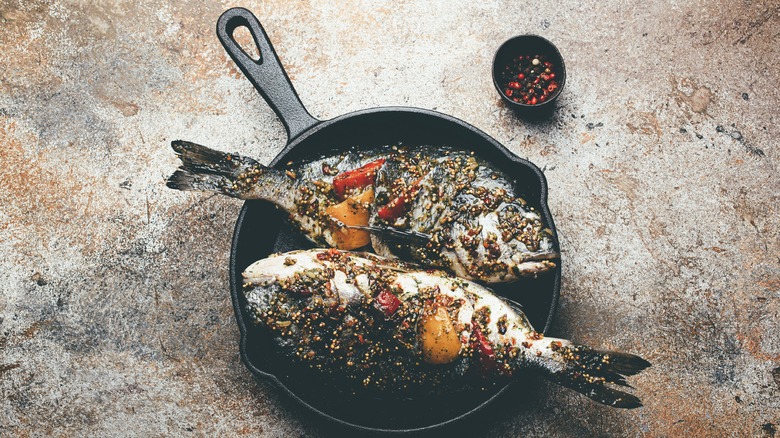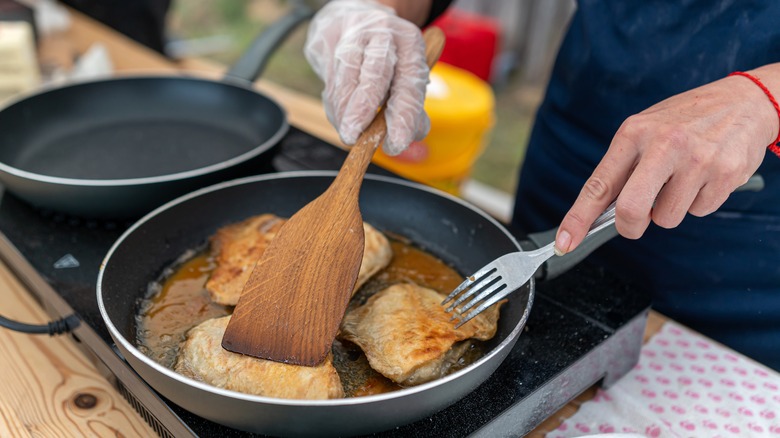The Type Of Fish You Generally Shouldn't Cook In Cast Iron
A cast-iron skillet is a household wonder, capable of searing steaks, sizzling burgers, or delicately crisping a baked cornbread. When compared to nonstick, a cast-iron skillet always wins. It can go from the stovetop to the grill, to the oven, then right to the sink, where just a quick scrub with hot water makes it ready for your next job. But while cast iron is your friend for a multitude of foods, cooking delicate fish isn't one of them. That's because its ability to achieve that perfectly crispy crust on a steak or cornbread comes from cast iron's ability to withstand and maintain very high temperatures. That won't work on the delicate flesh of a fish.
Contrary to one of the many myths about cast iron, it actually isn't nonstick. Although the seasoning layer does provide a light buffer between the heating surface and the meat, if you've ever cooked an egg or shredded potatoes in a cast-iron skillet without adding fat first, you know that cast iron isn't truly nonstick. With a delicate fish, the meat is likely to grab hold of the skillet's surface and not let go, meaning you'll be left scraping shredded fish off the bottom, with little left for your dinner plate.
Which fish go in cast iron, and which don't?
Fish that are delicate — usually flaky whitefish — and rip easily should not be cooked in cast iron. This would include flounder, tilapia, sole, salmon, trout, crappie, or cod. For these fish, you would be better off sauteing filets in a nonstick skillet, or using a moist method such as steaming or poaching. For example, you could try cooking cod using our foil-packet method, which holds steam in and doesn't allow the fish to stick to a pan or grill grates. If you really like cast iron for its heating properties, you might consider a ceramic-coated or nonstick cast-iron pan. And it's a good idea to use a fish spatula when cooking these fish; they're ideal for delicate foods because the edge is sharp and thin, able to slide under a fish without breaking it.
There are some fish, however, with firmer flesh that might work in cast iron. These include fish with crispy skins — skin-on salmon, for example — or fried fish that's coated in breading. Other fish with firm flesh include sea bass, halibut, mahi mahi, or swordfish; these may be better able to withstand cooking in a cast-iron skillet, particularly one coated first in a fat such as olive oil or butter. However, something to also keep in mind is odor or strong flavor. One of the things home cooks love about cast iron is that it takes on the flavors of what's cooked in it; that's what seasons the pan and enriches the flavors of foods. But with a pungent fish, you risk having the skillet absorb those odors and flavors, which could affect the flavor of the next thing you cook — which is a problem if you're making a dessert.

